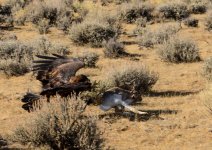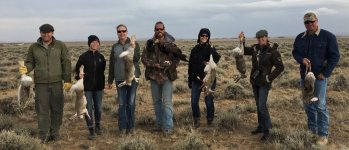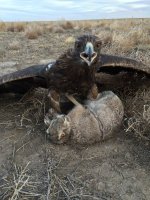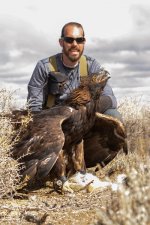Get a proper pack saddle with a Britchen. Use rope to tie horns on. Make sure not to use knots.
If your horse is pretty good to handle as he looks like, then get rid of the d ring snaffle they pinch and are for beginner horses to get use to a bit.
Don't get a spade bit unless you completely understand horses and pressure and collection.
A short shanked solid bit with a roller. Will be fine for you and him. Just try to stay away from anything that pinches. Everyone has different tastes when it comes to head gear for a horse.
Also us a head stall with a throat latch, that way they can't rub the bridle off and step all over it/tare it to hell.
Hi Deadfall,
I appreciate the insights! I am learning a lot as I go. Took them up to Colorado for ML season elk this year. Spent 11 nights on the mountain scouting/hunting. I’ve got the basic maintenance pretty well sorted out. I prefer to highline spike camping and during the day base camping. If at base camp I tie to the trailer at night with a HI Tie arm. I run electro braid hot fence at home and they are very good with it. I just don’t trust electric in the woods and feel much better knowing they are physically restrained. I did see some guys bring lightweight panels with them and set up a portable corral at base camp. That seemed pretty slick.
I have always used quick release knots. We use those in falconry for tying birds so that was second nature.
I learned hobbles are no longer happening LOL. My riding horse has an old pastern injury. If he moves around too much in hobbles he reopens the scar. Plus he can get around pretty good in them so no hobbled grazing for him! My other horse will not leave my horse so he gets more options. I feed alfalfa cubes at home so that’s what I pack on trips. I have come to the conclusion that I will need to pack in feed for both horses for any spike camp. Just too much hassle to graze (time, hobbles, ect), plus going to places I have never been its always a gamble if there will be enough food. This year in CO it dumped a foot of snow on me early September.
I have figured out what I like for equipment. I am running a real adjustable pack saddle now (custom pack rigging). Brichen, double cinch, ect. Works very well. I run 5 star roping pads for saddles, and a 5 star pack pad for packing. Switched to a tom thumb bit. I always pony my packhorse in. But a lot of times I allow him to free follow out at night. I wrap his lead around pack saddle arch and tuck it in. Nothing tied so if he does get tangled in any way it just pulls free.
The biggest thing I need to work on is serious off-roading with them in the mountains. It would be so much easier if I wasn’t ponying a horse every time I leave camp. There are a lot of places I won’t ride due to having the other horse on lead. I would love to get out with a really experienced backcountry rider and go through some rough terrain to learn more about the type of terrain that can be covered on horses. Unfortunately in Texas, there are not many options. There isn’t a BCHA chapter in Texas. The conclusion I have come to is that I need to find a hunting partner to come with me on these trips. It would be a lot easier if I could put someone on my other horse and we could ride together. I feel like I would be a lot more effective that way.
My new plan is to have a hunting partner. If we pack into camp I will ride in feed on the first trip with a pack-saddle. On return to trailer switch out to riding saddle and use over saddlebags to pack in camp. That way we both can ride out from camp each day. Carry a second set of over saddle panniers in gear. When packing out if packing elk, use both horses with over saddle panniers. One to carry camp and some meat. The other to carry the majority of meat. Requires walking out leading horses, but much lighter than backpacking out meat lol.
If we base camp hunt. Ride out from camp each morning with over saddle panniers packed in saddlebags. If we kill use pack horse to pack kill out. Partner and or I may have to walk out. But again better than having to have meat out on our backs.
More horse makes things easier (less trips in/out to haul feed/gear) but creates other problems like new new bigger trailer. Trying to keep 3 horses legged up instead of 2, increased yearly expenses.
It’s definitely a learning process. I greatly appreciate all the info and tips on this forum!
Chase





